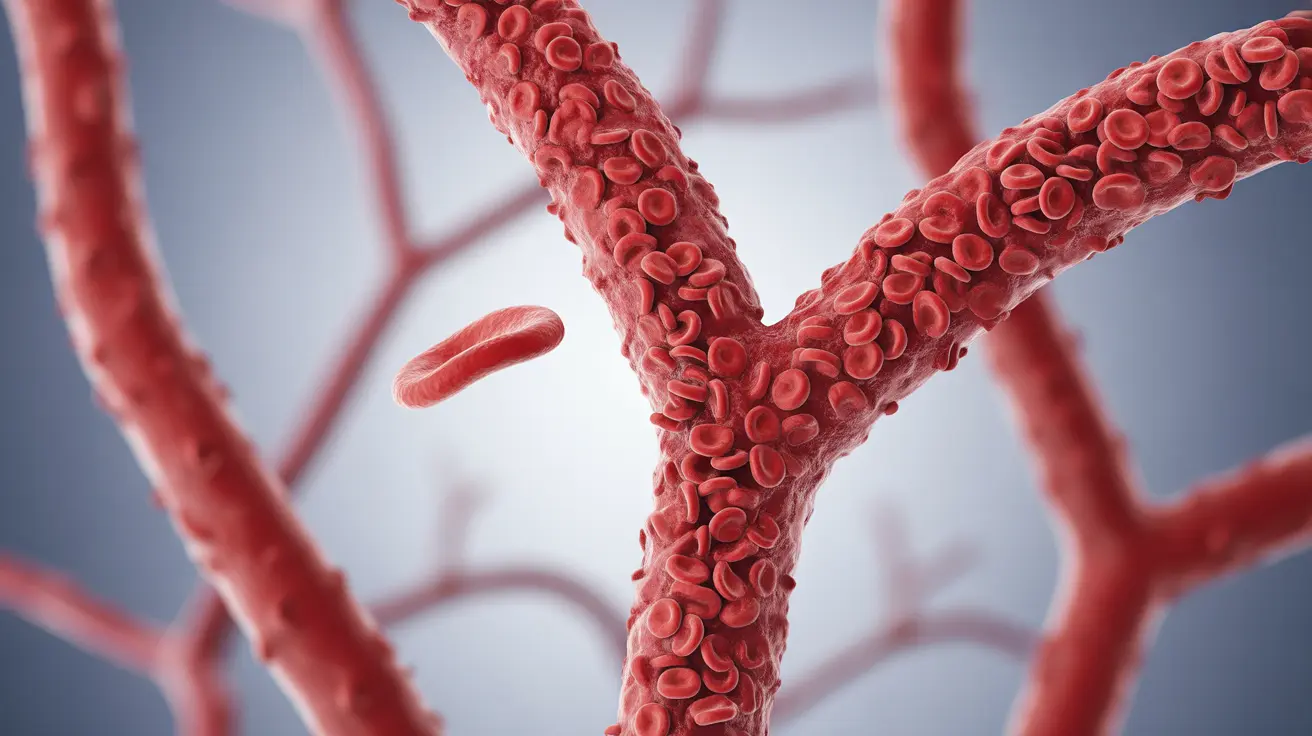Hyperviscosity syndrome in newborns is a serious condition where blood becomes abnormally thick, potentially affecting blood flow and oxygen delivery throughout the body. This condition requires prompt medical attention as it can impact a newborn's health during their crucial early development period.
Understanding hyperviscosity syndrome is essential for healthcare providers and parents alike, as early recognition and treatment can prevent complications and ensure better outcomes for affected infants.
What is Hyperviscosity Syndrome?
Hyperviscosity syndrome occurs when a newborn's blood becomes too thick, making it difficult for blood to flow properly through small blood vessels. This condition typically develops within the first few days of life and can affect various organ systems.
Risk Factors and Causes
Several factors can contribute to the development of hyperviscosity syndrome in newborns:
- Maternal diabetes
- Intrauterine growth restriction
- Twin-to-twin transfusion syndrome
- Delayed cord clamping
- Post-term delivery
- Polycythemia (high red blood cell count)
Common Signs and Symptoms
Hyperviscosity syndrome can manifest through various symptoms, which may include:
- Poor feeding
- Lethargy or irritability
- Breathing difficulties
- Bluish skin color (cyanosis)
- Jaundice
- Poor circulation in extremities
- Tremors or jitteriness
Diagnosis and Testing
Healthcare providers use several methods to diagnose hyperviscosity syndrome in newborns:
Laboratory Tests
The primary diagnostic tool is measuring blood viscosity and hematocrit levels. Additional tests may include:
- Complete blood count
- Blood sugar levels
- Oxygen saturation measurements
- Coagulation studies
Physical Examination
Doctors will conduct thorough physical examinations to check for:
- Skin color and circulation
- Respiratory rate and effort
- Neurological status
- Signs of organ dysfunction
Treatment Options
Treatment approaches for hyperviscosity syndrome vary based on severity and symptoms:
Partial Exchange Transfusion
This is the primary treatment for severe cases, involving the replacement of thick blood with normal saline or plasma to reduce blood viscosity.
Supportive Care
Additional supportive measures may include:
- Monitoring vital signs
- Maintaining proper hydration
- Managing blood sugar levels
- Treating any underlying conditions
Prevention and Monitoring
While not all cases can be prevented, certain measures can help reduce risk:
- Proper management of maternal diabetes during pregnancy
- Appropriate timing of cord clamping
- Regular monitoring of at-risk newborns
- Early identification and treatment of polycythemia
Frequently Asked Questions
What causes hyperviscosity syndrome in newborns and which factors increase the risk?
Hyperviscosity syndrome is primarily caused by an elevated red blood cell count (polycythemia). Risk factors include maternal diabetes, delayed cord clamping, intrauterine growth restriction, and twin-to-twin transfusion syndrome.
What are the common symptoms and signs of hyperviscosity syndrome in infants?
Common symptoms include poor feeding, lethargy, breathing difficulties, bluish skin color, jaundice, poor circulation, and tremors. These signs typically appear within the first few days of life.
How is hyperviscosity syndrome diagnosed in newborns and what tests are used?
Diagnosis involves measuring blood viscosity and hematocrit levels through laboratory tests. Additional assessments include complete blood count, blood sugar levels, and physical examination to check for signs of poor circulation and organ dysfunction.
What treatment options are available for babies with hyperviscosity syndrome?
The main treatment is partial exchange transfusion, where thick blood is replaced with normal saline or plasma. Supportive care includes monitoring vital signs, maintaining hydration, and managing any complications.
Can late umbilical cord clamping lead to hyperviscosity syndrome in newborns?
Yes, delayed cord clamping can contribute to hyperviscosity syndrome by increasing the volume of red blood cells transferred to the newborn. However, this risk should be balanced against the potential benefits of delayed cord clamping, and decisions should be made on a case-by-case basis.




